New Marseille restaurant Dévo dishes up a sultry 1970s mood
Mirrors, satin curtains, and tubular steel define the atmosphere of this theatrical hangout, as envisioned by a local team of creatives
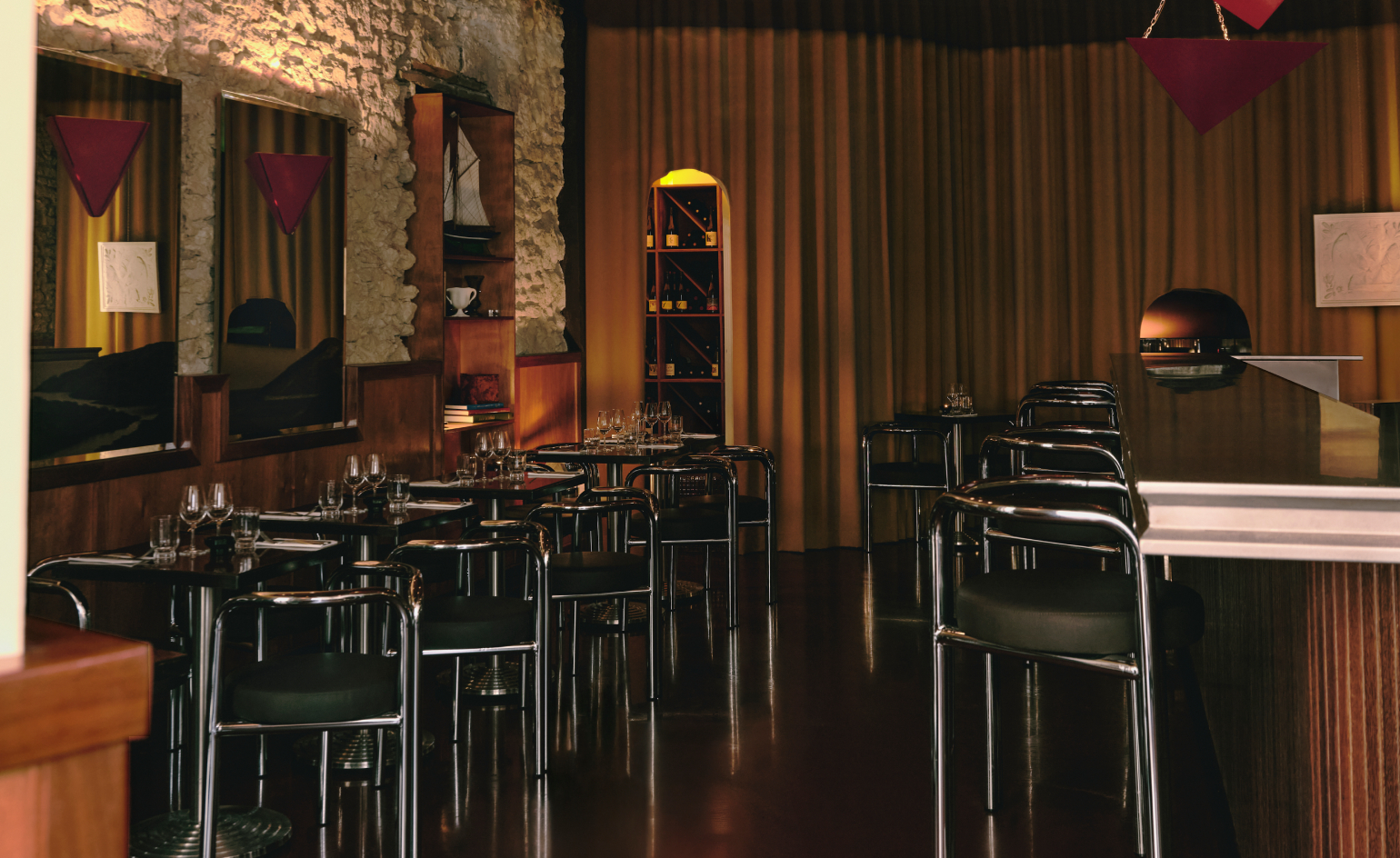
Designer Axel Chay’s totemic, tubular steel objects are synonymous with the creative energy of Marseille. Now, Chay and his wife Mélissa have designed a new restaurant and wine bar in the French city. Named Dévo (after the namesake American new-wave band), it’s located in the Préfecture neighbourhood, offering up a lively setting for relaxed Provençal fare from chef Ferdinand Fravega (of local favourites Figure and Ippon).
It’s the first space that the duo have designed and art directed, and the cocooning yet upbeat interior carries the mood through from early aperitivo to midnight. ‘A blend of contemporary design and vintage pieces echoes the contrasts of Marseille itself: historic façades facing bold modern lines, classical stone meeting industrial textures,’ says Axel.
Wallpaper* dines at Dévo, Marseille
The mood: sultry vermuteria
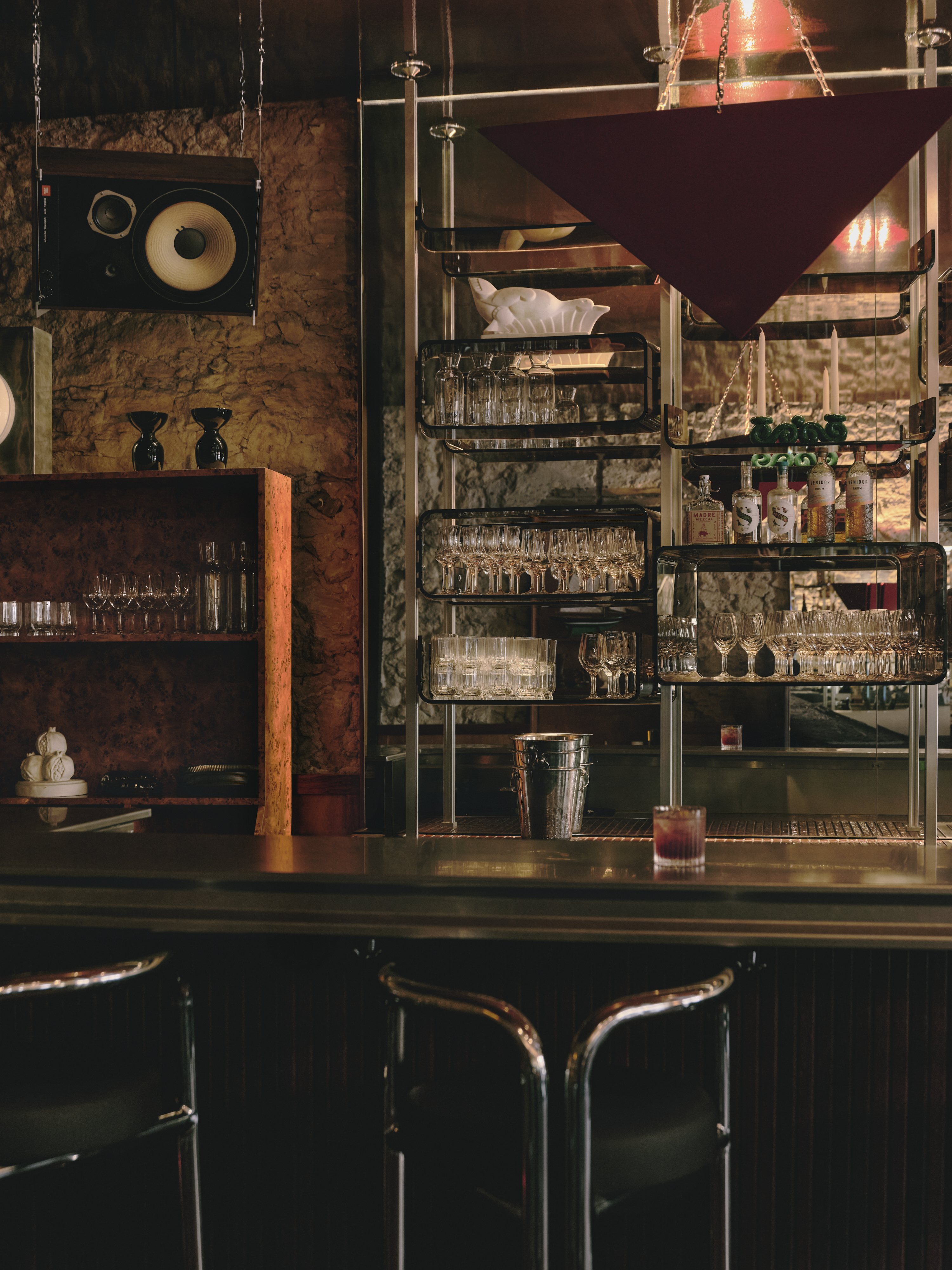
The stained Okoumé wood wall panels, varnished resin dusky burgundy floor, and sweeping lime-coloured satin curtains offset the sheen of the vintage zinc bar and tubular steel bar stools and chairs. ‘Our inspiration came from old cafés and vermuterias in Italy and Spain; timeless places where you feel the patina of life,’ explains Mélissa.
The cinematic atmosphere is enhanced by curiosities: mirrors designed by Marseille-based artist Aurélien Ciller are printed with mountains, referencing the landscape that surrounds the city, and the mirrored advertising panels of old bistros and classic train station restaurants.
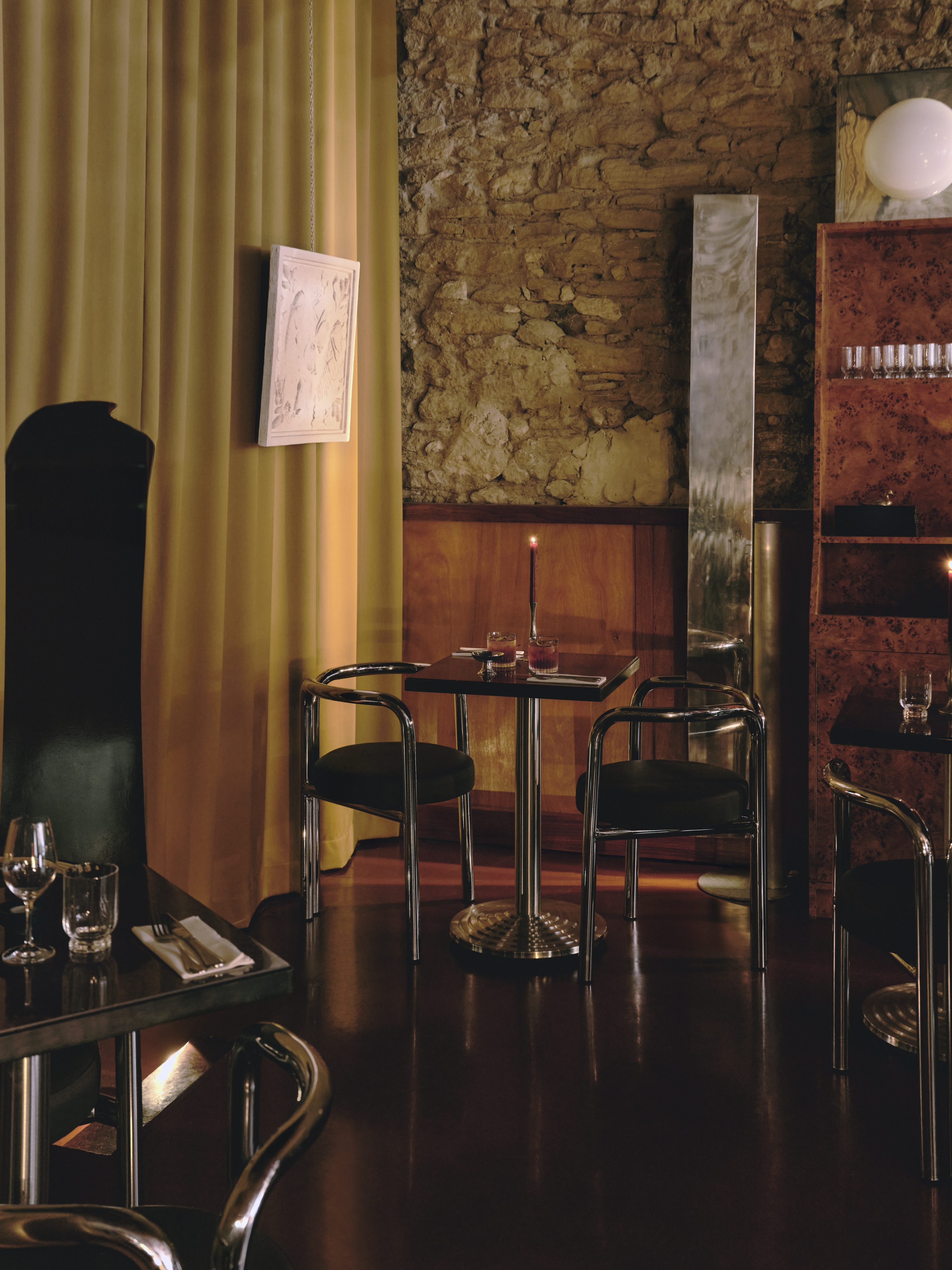
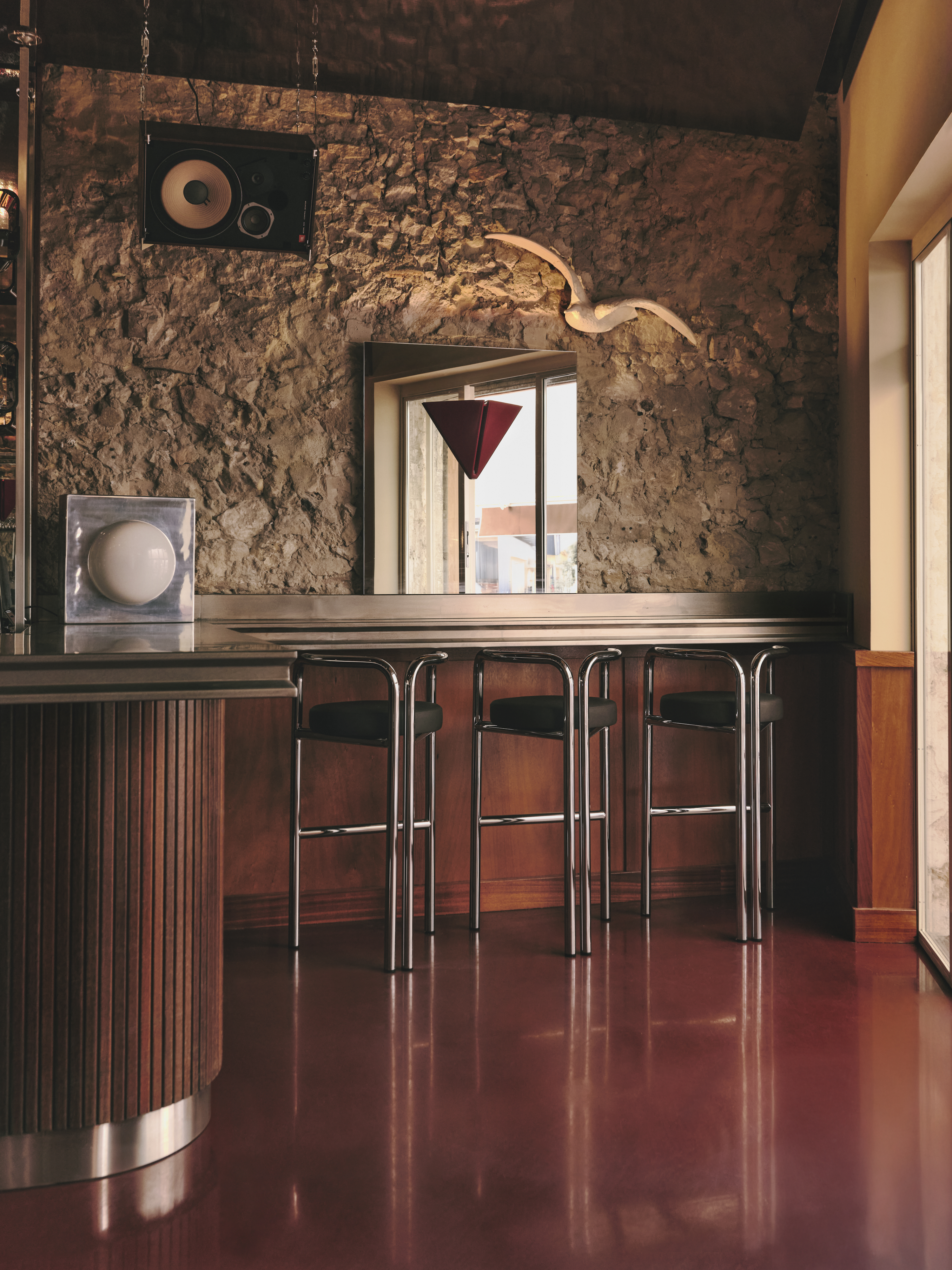
Plaster seagulls, originally destined for a theatre set, soar across the walls. Axel discovered these in the workshop of his plaster craftsman in the Var: ‘I’m often drawn to shapes inspired by the sea: fluid, imperfect, alive.’
All of the lighting has been crafted by Axel’s brother Aimeric, in their family metal-working atelier in Marseille, inherited from their father. They work there together on prototypes and limited-edition pieces. The inverse pyramidal lamps are so new they haven’t even been named yet; their shape nods to the red hats worn by the Devo band members.
Receive our daily digest of inspiration, escapism and design stories from around the world direct to your inbox.
The food: comfort Provençal

Moving away from sharing plates, chef Fravega proposes lighter bites and mains that complement each other. Dishes such as salted anchovies, pissaladière and French onion soup occupy the former, while hearty options, such as Milanese risotto and coq au vin, feature on the latter. The extensive wine list boasts around 100 choices of independent and natural winemakers on menus designed by the local Flirt Studio, also behind the restaurant branding.
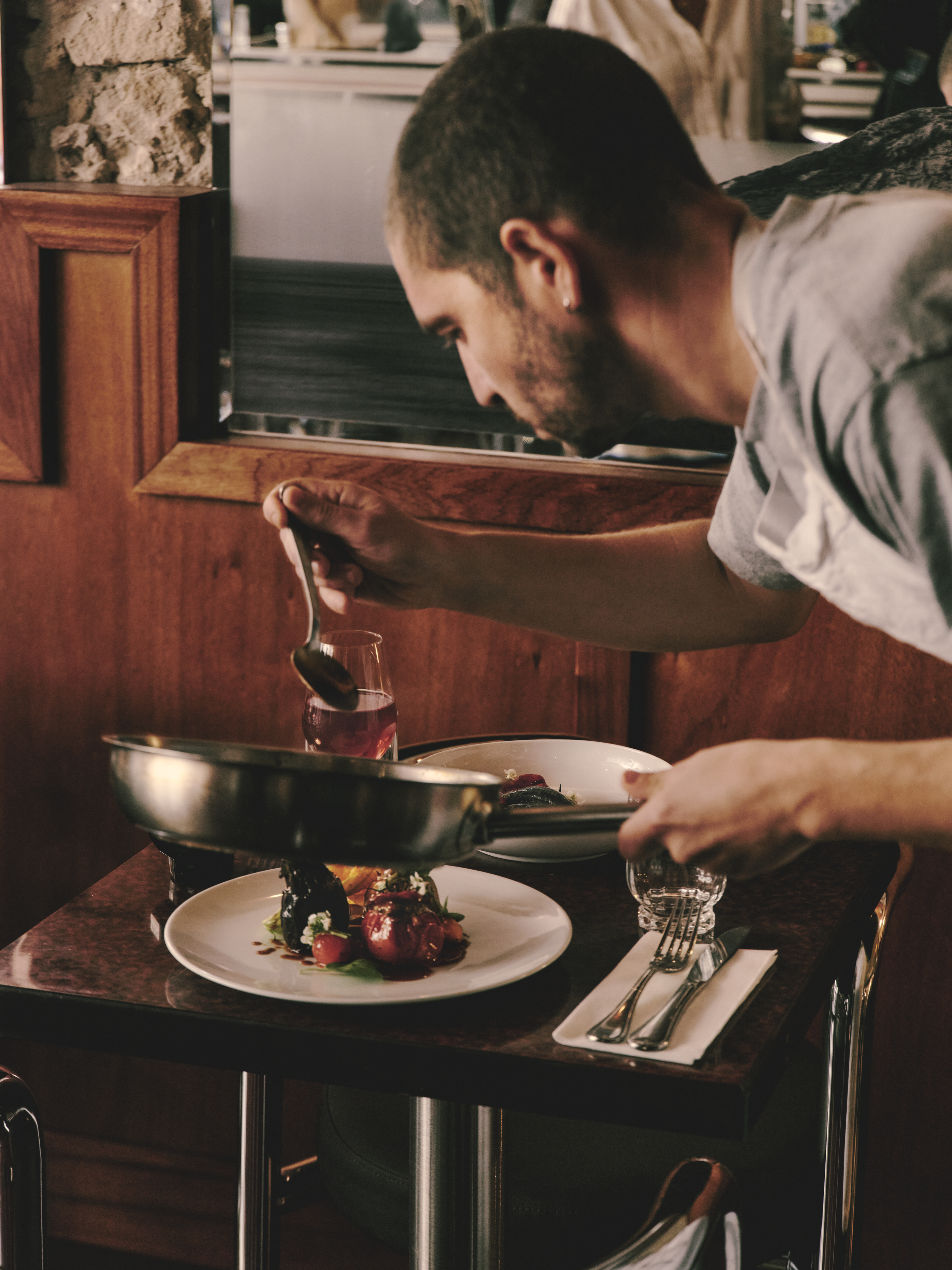
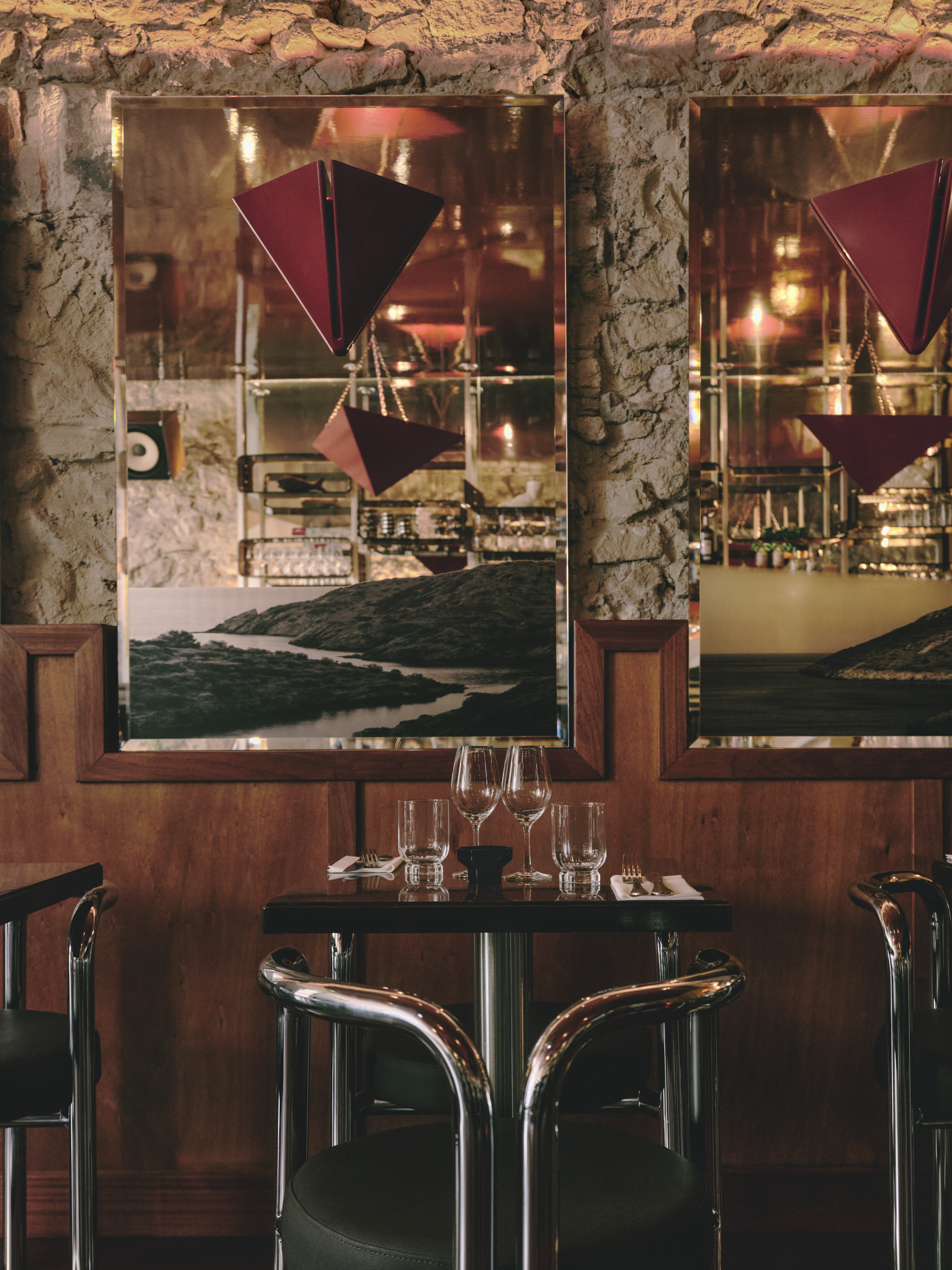
With its richly atmospheric décor, soft lighting, and curated music playlist, Dévo is a congenial spot with a distinctive mood – the result of its thorough art direction and creative team. ‘The goal with Dévo is, of course, to seduce the eye but also to awaken a sense of belonging and curiosity. It is the same feeling you get when you wander through the streets of Marseille, where every corner holds a new surprise,’ says Mélissa.
Dévo is located at 22 Bd Paul Peytral, 13006 Marseille, France.
Sofia de la Cruz is the Travel Editor at Wallpaper*. A self-declared flâneuse, she feels most inspired when taking the role of a cultural observer – chronicling the essence of cities and remote corners through their nuances, rituals, and people. Her work lives at the intersection of art, design, and culture, often shaped by conversations with the photographers who capture these worlds through their lens.
-
 The Wallpaper* gift guide for fashion lovers
The Wallpaper* gift guide for fashion loversSelected by the Wallpaper* style team, a curated gift list of clothing and accessories for the design-minded dresser in your life this festive season
-
 All eyes on Paris Photo 2025 – focus on our highlights
All eyes on Paris Photo 2025 – focus on our highlightsThe world's most important international photography fair brings together iconic and emerging names, galleries large and small – and there’s much to covet
-
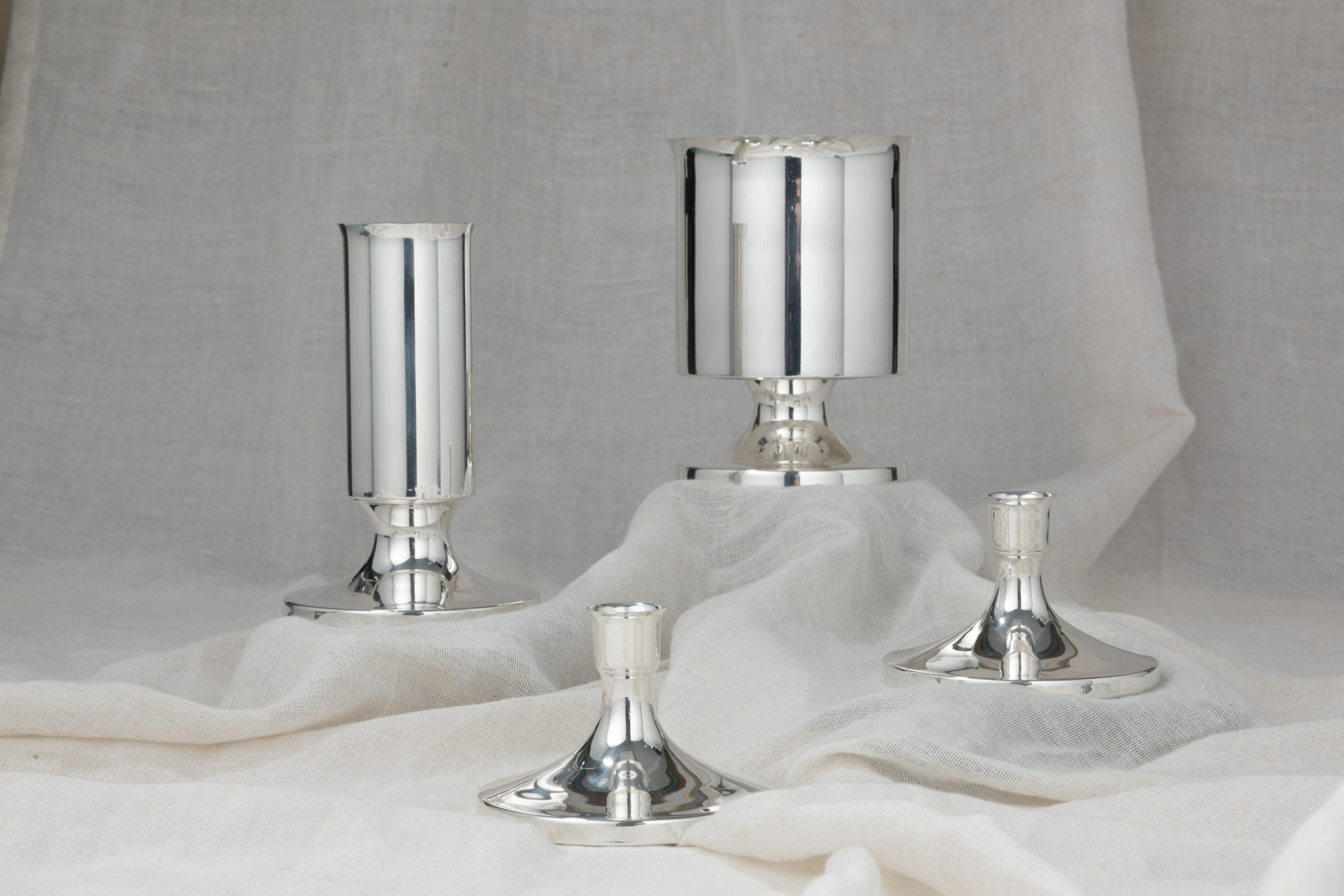 Studio Boum introduces Roum: a new collection of refined tabletop objects
Studio Boum introduces Roum: a new collection of refined tabletop objectsA passion for the art of gathering inspired this experiential design studio – known for its memorable fashion moments – to create refined tabletop objects
-
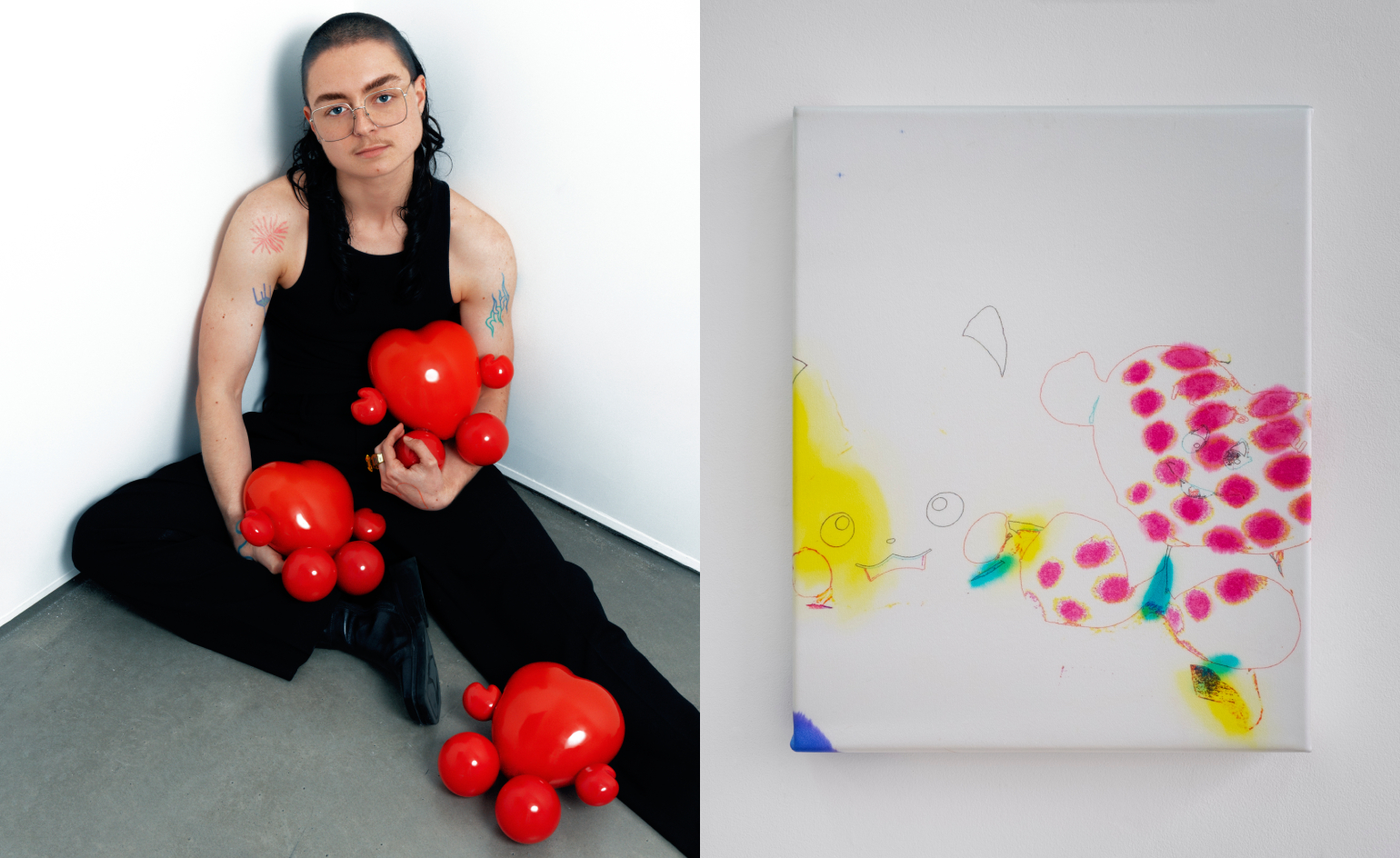 A local’s guide to Paris by Art Basel newcomer Ash Love
A local’s guide to Paris by Art Basel newcomer Ash LoveVisual artist Ash Love shares their essential addresses in the French capital as the city hosts the art fair’s fourth edition
-
 Hôtel Le Provençal is a sun-kissed family affair
Hôtel Le Provençal is a sun-kissed family affairA beloved third-generation hotel in the south of France reopens with a fresh look, all whilst preserving its authentic midcentury heritage
-
 A night at Le Meurice’s Suite 1835 is like ‘sleeping in an exhibition’
A night at Le Meurice’s Suite 1835 is like ‘sleeping in an exhibition’At the historic Paris hotel, design studio Things From shake things up with an installation-like suite – a futuristic cocoon available until the end of 2025 only
-
 Crosby Studios reimagines the espresso bar in Paris
Crosby Studios reimagines the espresso bar in ParisIndustrial poetry and a blaze of orange define Café Nuances’ latest outpost in Le Marais
-
 Yannick Alléno takes over Monsieur Dior: ‘What would Christian Dior do if he were to create a restaurant today?’
Yannick Alléno takes over Monsieur Dior: ‘What would Christian Dior do if he were to create a restaurant today?’At 30 Montaigne in Paris, the world’s most Michelin-starred chef reimagines French gastronomy as Christian Dior himself might have dreamt it
-
 Les Domaines de Chabran redefines the Provençal summer house
Les Domaines de Chabran redefines the Provençal summer houseArchitect Alain Meylan and interior designer Liliana Atilova bring contemporary finesse to centuries-old country houses in southern France. Discover their latest
-
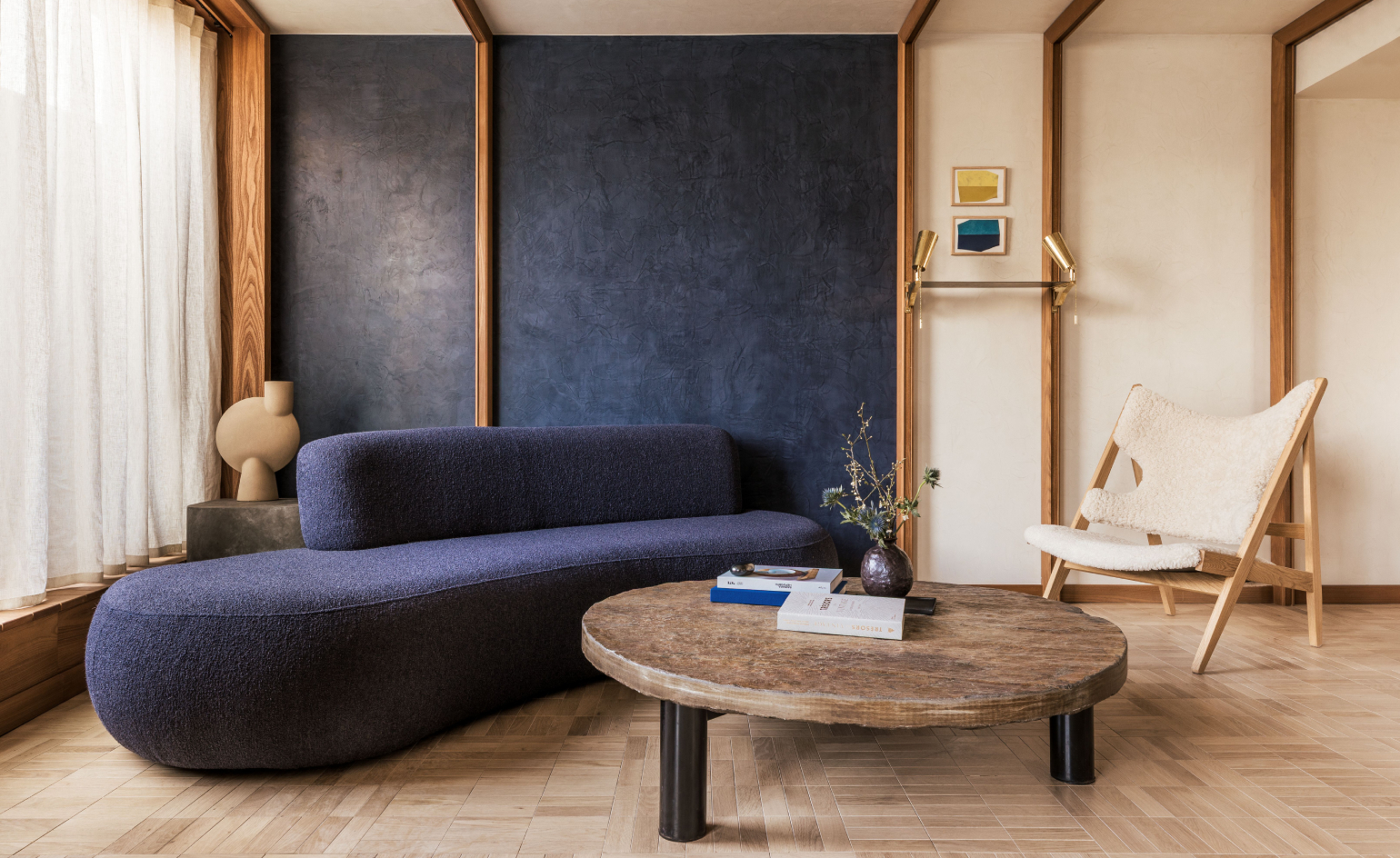 At La Fondation hotel in Paris, minimalism has irresistible warmth
At La Fondation hotel in Paris, minimalism has irresistible warmthOnce a parking lot, this 17th-arrondissement stay now offers rooftop city views, cocooning suites, and interiors by Roman and Williams
-
 Sip in style at 30,000 feet with Air France’s new premier cocktail collection
Sip in style at 30,000 feet with Air France’s new premier cocktail collectionThe airline partners with mixologist Matthias Giroud on three new signature cocktails for its La Première customers – here’s to a modern negroni, or a spicy non-alcoholic tipple